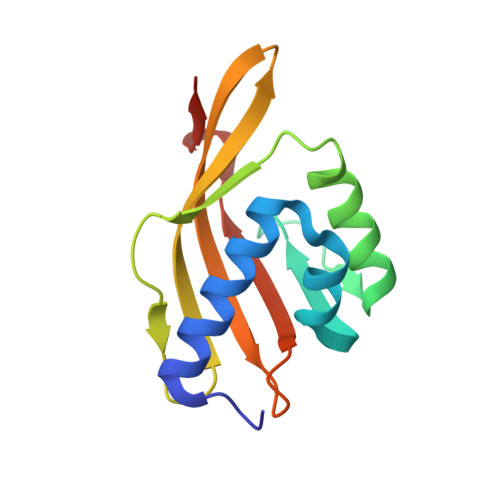Hydrogen bond coupling in the ketosteroid isomerase active site.
Sigala, P.A., Caaveiro, J.M., Ringe, D., Petsko, G.A., Herschlag, D.(2009) Biochemistry 48: 6932-6939
- PubMed: 19469568
- DOI: https://doi.org/10.1021/bi900713j
- Primary Citation of Related Structures:
3FZW - PubMed Abstract:
Hydrogen bond networks are key elements of biological structure and function. Nevertheless, their structural properties are challenging to assess within complex macromolecules. Hydrogen-bonded protons are not observed in the vast majority of protein X-ray structures, and static crystallographic models provide limited information regarding the dynamical coupling within hydrogen bond networks. We have brought together 1.1-1.3 A resolution X-ray crystallography, (1)H NMR, site-directed mutagenesis, and deuterium isotope effects on the geometry and chemical shifts of hydrogen-bonded protons to probe the conformational coupling of hydrogen bonds donated by Y16 and D103 in the oxyanion hole of bacterial ketosteroid isomerase. Our results suggest a robust physical coupling of the equilibrium structures of these two hydrogen bonds such that a lengthening of one hydrogen bond by as little as 0.01 A results in a shortening of the neighbor by a similar magnitude. Furthermore, the structural rearrangements detected by NMR in response to mutations within the active site hydrogen bond network can be explained on the basis of the observed coupling. The results herein elucidate fundamental structural properties of hydrogen bonds within the idiosyncratic environment of an enzyme active site and provide a foundation for future experimental and computational explorations of the role of coupled motions within hydrogen bond networks.
Organizational Affiliation:
Department of Biochemistry, Stanford University, Stanford, California 94305, USA.

















